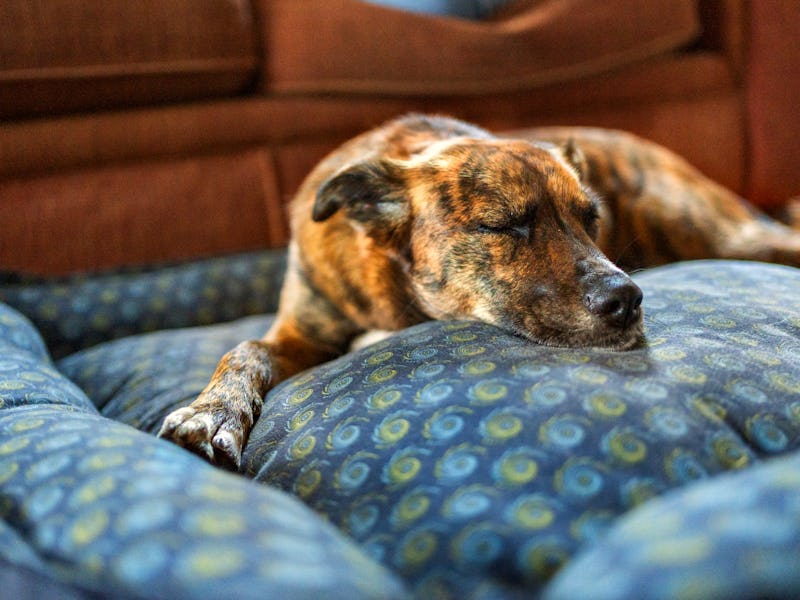Do Dogs Dream of Chasing Sheep? A Psychologist Weighs In
“A dream pointer will point at dream birds and a Doberman will bark at dream burglars.”

It’s the cutest when your pooch starts snorting and twitching in their sleep, a sure sign that they’re dreaming. Maybe you’ve even wondered what they dream about: Playing fetch? Finding treats? Or outlandish things, like flying and showing up to a college course in their underwear?
Researchers have asked this question too. Canine dream psychology has some ample research that lets us into the brains of our favorite pets.
How do we know dogs dream?
One of the clearest markers we have of dreaming in mammals is a change in breathing and rapid-eye movement (REM), signifying the deepest stage of sleep and the moment dreaming begins, according to Stanley Coren, professor emeritus of psychology at the University of British Columbia specializing in dogs.
Based on dream research on humans, we have reason to believe dogs and other mammals have similar dream patterns. “When you awaken humans during rapid eye movement sleep, in more than 95 percent of the cases, they report that they were in the middle of a dream,” Coren tells Inverse. On the other hand, the majority of people woken up outside of REM sleep reported no dreams.
However, large and small dogs’ dreaming patterns differ. Large dogs have fewer dreams than small dogs, though large dogs’ dreams are much longer. “For example, a Saint Bernard might have one dream every 45 minutes or so, and that dream can probably go up to four, maybe even five minutes in length,” Coren says. “Whereas a pug might dream every 10, 15 minutes but will only run about a minute or two.”
This phenomenon partially arises from the fact that large and small dogs have different sleep architecture, meaning they pass through the stages of sleep differently. Big dogs tend to drift through these phases more slowly than smaller dogs. The reason why dogs of different sizes have different sleep architectures still isn’t clear to psychologists like Coren.
What do dogs dream about?
We don’t have dream-o-vision yet, but there’s a hack researchers have used to learn what dogs dream about. This hack involves deactivating two centers in the brain that suppresses movement while we’re dreaming. Residing in the brainstem, this area is called the pons. With this switch flipped in two centers, dogs are free to act out their dreams, letting humans in on the inner machinations.
“We find that dogs, like people, tend to dream about fairly ordinary, daily activities,” Coren says. “A dream pointer will point at dream birds and a Doberman will bark at dream burglars.”
An article published in the journal Neuron in 2001 found that rats with these centers in the pons deactivated appeared to act out their daily routines as they slept, which gives us some insight into the dreaming brains of other mammals.
Can dogs have bad dreams?
Coren isn’t certain whether dogs have nightmares. Your pup might be growling as he snoozes, but that’s no indication that he’s in the midst of a scary dream. “He could be just excited, dreaming about maybe you know, seeing a duck or something like that,” Coren says. “Or if he's growling and twitching, he could be dreaming about playing with another dog in a rough and tumble way.”
However, Coren recommends against waking up your dog, even if she makes distressing noises. The best course of action is to observe your dreaming pooch.
At first glance, canine dream psychology may not seem like the most pressing topic to study, but Coren knows its value. “Well, why is it important to know what people dream about?” Coren asks. “We want to know what is going on inside of the brains of the animals that we study whether they're human or other.”